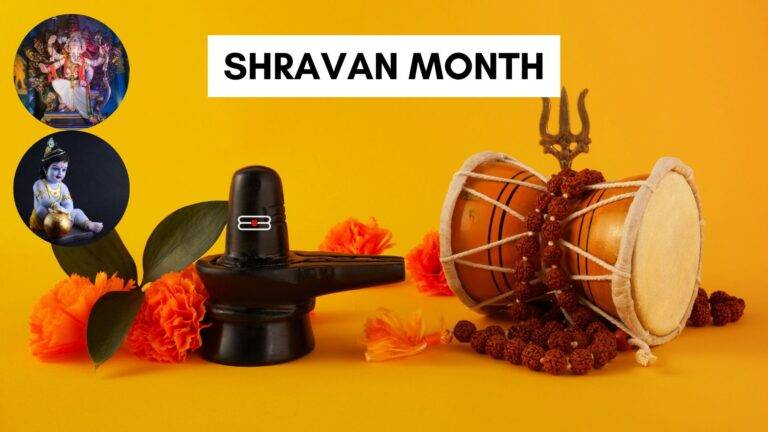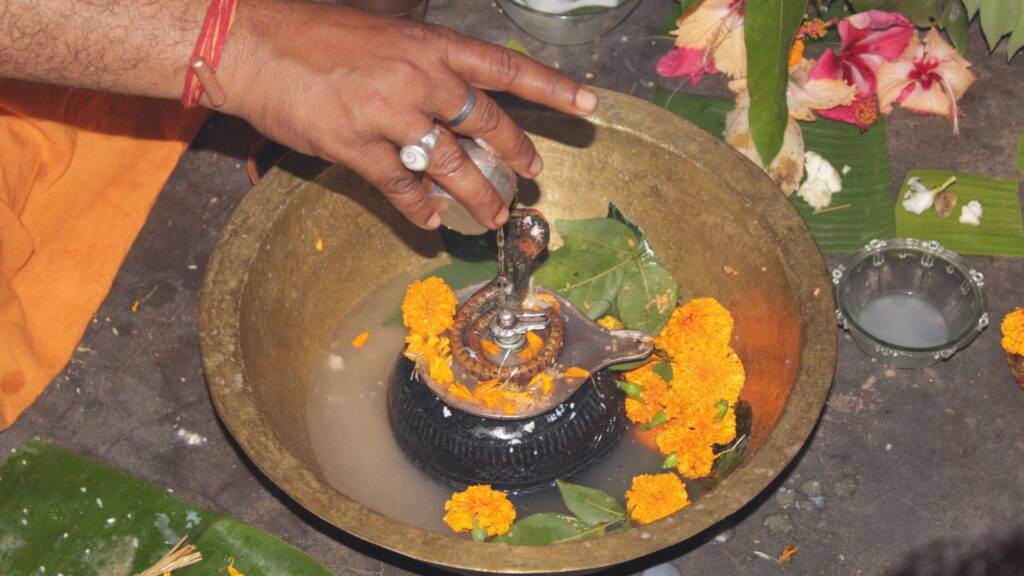
As the monsoon showers drench the Indian subcontinent, the vibrant festival season of Savan Maas ushers in a time of devotion, joy, and cultural festivities. This period, nestled between July and August, is marked by a series of significant Hindu festivals that highlight the spiritual and cultural richness of India. Among the most prominent are Janmashtami, celebrating the birth of Lord Krishna, and Ganesh Chaturthi, honoring the beloved elephant-headed god, Ganesha. Let’s explore these festivals and their significance in detail.
Savan Maas: The Holy Month (Shravan Month)

Savan Maas, also known as Shravan, is the fifth month in the Hindu calendar and is considered highly auspicious. It is dedicated to Lord Shiva, with devotees observing fasts and performing special prayers. The monsoon season adds a mystical charm to the worship rituals, with devotees visiting Shiva temples and offering holy water from the Ganges.
Janmashtami: The Birth of Lord Krishna

Janmashtami marks the birth of Lord Krishna, the eighth avatar of Lord Vishnu. Celebrated with great fervor and enthusiasm, this festival brings together communities in a joyous celebration of Krishna’s life and teachings. The festivities often start with fasting and prayers, culminating in the midnight birth ceremony known as ‘Krishna Janam.’ Homes and temples are decorated with flowers and lights, and devotees sing bhajans and kirtans in praise of Lord Krishna.
One of the highlights of Janmashtami is the ‘Dahi Handi’ event, where teams of young men form human pyramids to break a pot of curd hung high above the ground. This symbolizes Krishna’s playful nature and his love for butter and curd.
Ganesh Chaturthi: Welcoming Lord Ganesha

Following Janmashtami is Ganesh Chaturthi, a ten-day festival celebrating the birth of Lord Ganesha, the remover of obstacles and the god of wisdom and prosperity. The festival begins with the installation of beautifully crafted Ganesha idols in homes and public pandals (temporary structures). Devotees perform daily prayers and aarti, seeking the blessings of Lord Ganesha for success and well-being.
On the last day, known as Anant Chaturdashi, the idols are taken in grand processions to rivers or seas for immersion (visarjan). This ritual signifies the return of Lord Ganesha to his celestial abode, accompanied by the chants of “Ganpati Bappa Morya, Pudhchya Varshi Lavkar Ya” (O Lord Ganesha, come again early next year).

The Cultural Significance
These festivals are not just religious events but also cultural celebrations that bring people together, transcending social and economic barriers. They promote unity, harmony, and a sense of community. The colorful decorations, melodious bhajans, and the aroma of delicious traditional sweets and savories create an atmosphere of joy and devotion.
Conclusion
The festivals of Savan Maas, Janmashtami, and Ganesh Chaturthi are a testament to India’s rich cultural heritage and its deep-rooted spiritual traditions. They remind us of the timeless values of devotion, unity, and celebration of life. As the festivities light up our hearts and homes, they also inspire us to embrace the teachings of these deities and strive for a life of righteousness, wisdom, and prosperity.